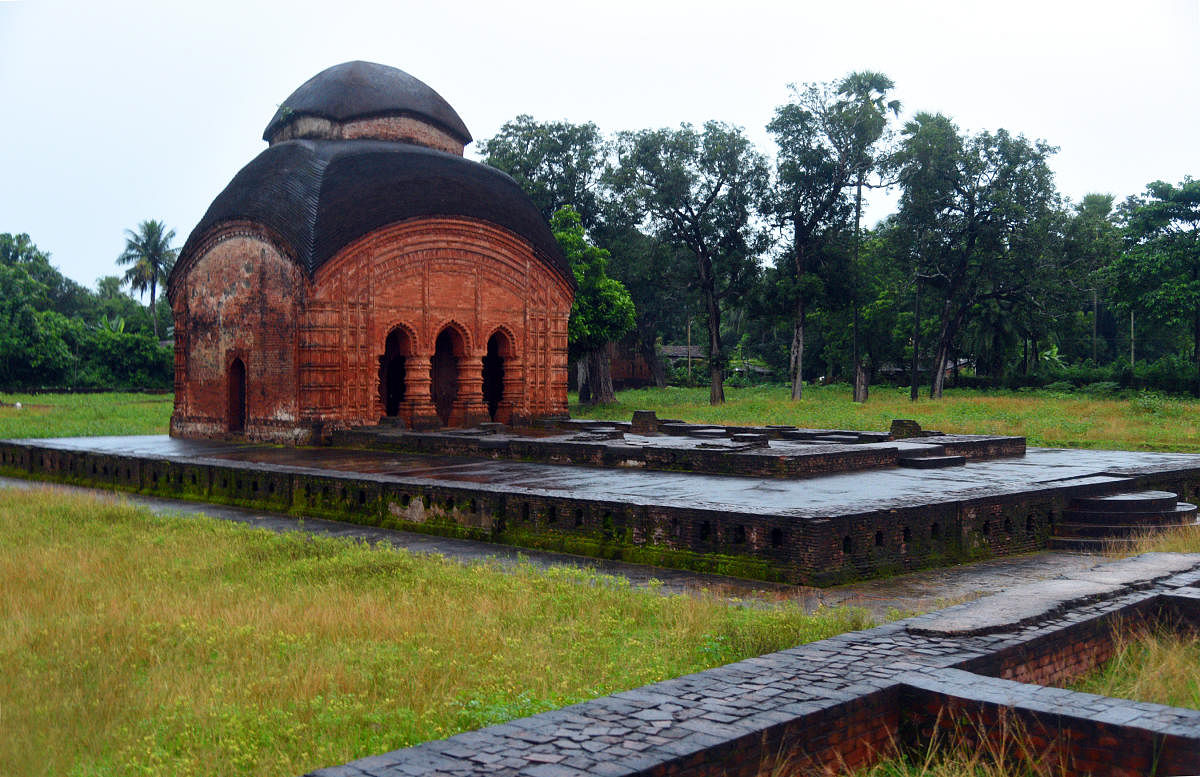
Mayurbhanj has been an important region of Odisha due to the mineral deposits that had fuelled the economy of this erstwhile princely state of the Bhanj Deo rulers. However, even with its sublime landscapes, beautiful forests and a rich cultural heritage, this northern corner of Odisha had somehow fallen off the tourist map. But Mayurbhanj is slowly opening up to its tourism potential and has much in store for the curious and culturally-inclined traveller.
The highlight of any trip to Mayurbhanj is a drive to Simlipal Tiger Reserve, 72 km away from the district headquarters of Baripada. The journey is initially through a pastoral landscape dotted with small villages till you enter an ancient forest of sal trees that form a thick overhead canopy. The jungle, even at noon, looks dark and forbidding. The drive is uphill and passes through several elephant corridors and if you are lucky, you can spot a herd of pachyderms or one of the 99 Royal Bengal Tigers that call Simlipal their home. On the way, the cascading waters of Barehipani, the third-highest waterfall in India, and Joranda Falls plunging over a towering cliff in a single drop, are two enthralling sights.
performance by young men who enact scenes from old wars that were fought centuries ago
Guhaldiha, a tribal village about 12 km from Baripada, is home to a community of women weavers of Sabai grass, a natural fibre, which grows abundantly in Mayurbhanj district. An untarred road leads through the village where you can find women artisans deftly turning the braided bundles of the organic fibre into crafty utility and decorative pieces. This eco-friendly tribal art of Mayurbhanj is now a major cottage industry of the state. The tribal Dhokra art of sculpting metal figurines from copper and bronze based alloys is another cultural heritage of Mayurbhanj.
Near the town centre of Baripada is the temple of Haribaladev Jeu, the presiding deity of Mayurbhanj. Built in 1575, the laterite stone structure is an exact replica of the more-famous Jagannath temple at Puri and houses the same sibling trio of Jagannath, Balaram and Subhadra.
The next pitstop is Mayurbhanj Palace, the ancestral palace from which the Bhanj Deos ruled their state. The façade has a striking resemblance to the Buckingham Palace.
Haripur, the ancient capital of Mayurbhanj, now lies in ruins about 15-km from Baripada. It is now a heritage site under the ASI. The magnificent brick temple of Rasika Raya stands amid the ruins of a massive fort built in 1400 AD, and if you are there in the late afternoon, its chiselled architecture oozes a crimson glow in the pale light. The brick foundations running around the temple lead to huge underground chambers, which were part of a subterranean tunnel — an escape route for the royal family in case of an invasion. The open alcoves on the walls of the Rasika Raya Temple were used to keep fire torches on special nights when dance performances were held in the temple courtyard. As darkness descends gently on the fort grounds of the ancient capital of Mayurbhanj, you can try to imagine how magical those nights would have been, more than half a millennium ago.